The ancient Egyptians lived in a time when the relationship between humans and wild animals was much closer out of necessity. From the jackal to the Nile crocodile, the Egyptians had a habit of recognizing the important roles each played within the ecosystem. They attributed their appropriate roles as belonging to deities.
Cats, though, had a special place in the culture of ancient Egypt. You can see it in the vast numbers of temples and statues of the creatures, as well as the cats which have been mummified to pass on to the next life. And it only makes sense. As Egypt developed into an important cradle of civilization, cats played an important role in regulating the populations of rats and other pests. And given that agriculture was regulated by the cycles of the Nile River, their ability to defend granaries could mean the difference between a community starving or surviving.
Today, Egypt is widely recognized as the birthplace of the domesticated cat. And while there are only a handful of breeds that can trace their origin to Egypt, these breeds are varied in terms of both appearance and personality. These are the seven big Egyptian cat breeds in existence today.
#1. African Wildcat: The Mother of All Domesticated Cats
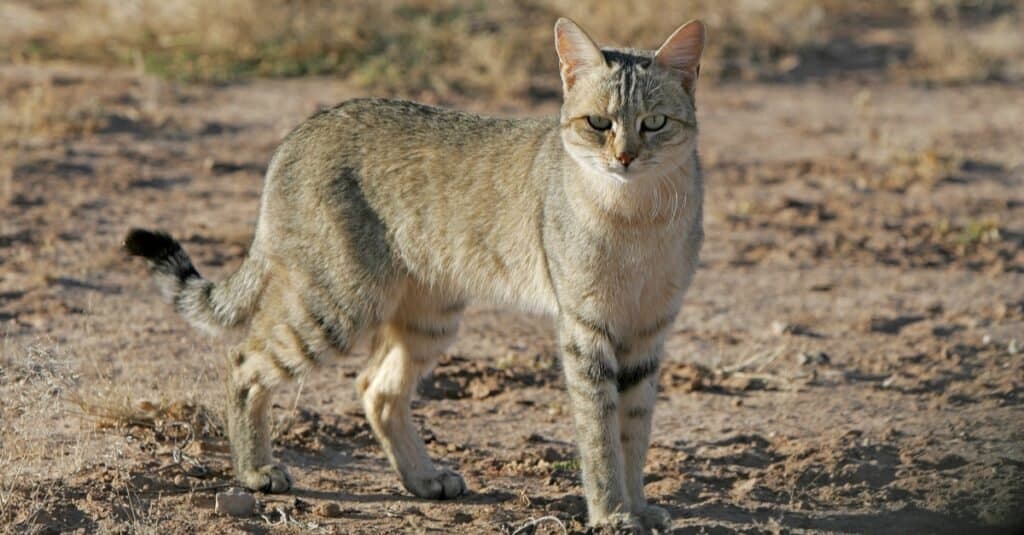
©Erwin Niemand/Shutterstock.com
With an average length of a little over two feet and facial features and body proportions that look quite similar to the typical domesticated breed, it would be easy to mistake the African wildcat for a pet. But these cats are definitely not tame, and there’s a reason why they’ve managed to develop habitats that cover nearly all of Africa and extend all the way into China and Mongolia. Their size certainly has a part to play in this. Larger African cats like lions and cheetahs have evolved in such a way that only large game like gazelles and wildebeest is a reasonable source for their nutritional needs.
The more compact African wildcat can hunt a variety of prey ranging from birds to lizards to insects. But rodents like mice, squirrels, and hares constitute 80% of the African wildcat’s diet. Natural selection even prepares these wildcats for the dramatic fluctuations that tend to occur in rodent communities. Their litter sizes are relatively large and common enough that many African wildcats can give birth more than twice a year. This ability to scale up their population to quickly meet the population of their prey species allowed them to elegantly fit a niche among human communities.
The African wildcat is actually the ancestor of every domesticated cat on the planet, but don’t mistake them for pets. You can learn more about its cousin — the European wildcat — here.
#2. Chausie: A Mix of the Wild and the Domestic
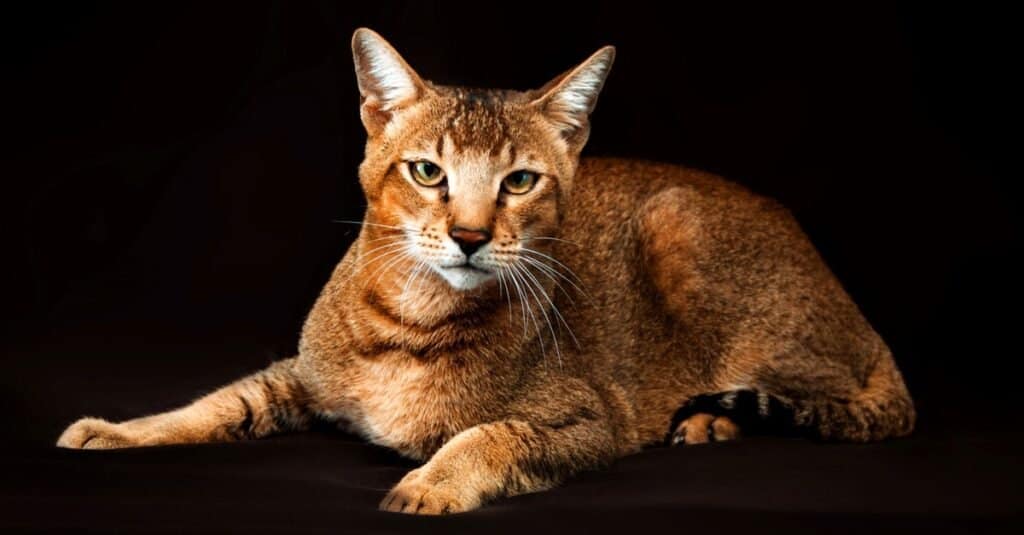
©Tania__Wild/Shutterstock.com
While the details may be up for debate, the scientific community recognizes that wildcats essentially domesticated themselves by adapting through natural selection to better fit environments created by humans. The Chausie is in some ways a deconstruction of traditional breeding practices, as it was bred to be a fully domesticated cat that more closely resembled the earliest ancient Egyptian cat breeds. The result is one of the largest and wildest-looking domesticated cats in the world. But rather than pick the direct ancestor of an African wildcat as the template, Chausies have been bred from a family member known as the jungle cat.
Jungle cats are similar in size, build, and habit to the African wildcat, and their heritage lends the Chausie a sturdy frame and a natural sense of athleticism. Because of that, these cats can easily reach 15 pounds and still be a healthy weight. And though they may have some of the physical traits of their jungle cat ancestors, their minds are purely domestic. Successive breeding among Abyssinians and other related domestic breeds has left these big cats with vibrant and gregarious personalities.
#3. Shirazi: Diamonds in the Rough

“Shirazi cat” in Iran, was first brought into Italy from Iran around 1620. This cat breed has been seen in hieroglyphics.
©Mehmet Cetin/Shutterstock.com
If rumors are to be believed, the Shirazi is the result of breeding between the short-muzzled and long-haired Persian cat from nearby Iran and the stunning and athletic Egyptian Mau. The result is a breed that doesn’t have recognition from any cat fancier organizations in the west, but you don’t have to look hard to find them on the streets of any modern Egyptian city. Feral and stray communities are persistent in urban areas, and the Shirazi is often treated as a common pest.
That’s a heartbreaking slight to a breed that deserves better. These lean but well-built cats inherited their personality from the Egyptian Mau, and they really thrive in environments where they get regular attention from a human caregiver. They’re regularly goofy and amiable, but they have clever minds that can often get them into trouble. Their good looks mostly come from their Persian side. Shirazi’s long fur is soft and luxuriant, but it also comes in a variety of colors and patterns that you won’t find with a traditional Persian. But what really stands out about these cats is their big, round, and expressive eyes.
#4. Nile Valley Egyptian Cat: A Street Cat With a Serious Lineage
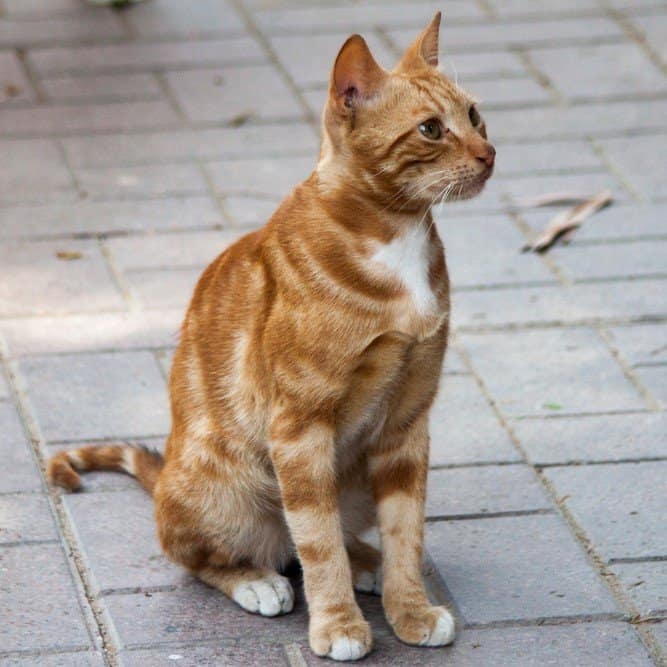
©Rodrigo Munoz Sanchez/Shutterstock.com
The Nile Valley Egyptian cat only gained recognition from the International Cat Association as an experimental breed in 2010, they’re at the heart of a fight regarding the relationship between modern Egyptians and the modern cat communities that live alongside them. Identified as a native breed of feral and stray cats that can be found throughout the country’s major city centers, some supporters of the breed claim that they’re the “missing link” between the African wildcat progenitor and the fully domesticated cat.
It’s only recently that breeders have begun to actively bring in these often feral felines for breeding, and the government typically treats them as a pest. Shooting and poisoning are some of the more common methods for dealing with feral cat colonies, and these actions are decimating a breed of cats that might not exist anywhere else in the world. These cats resemble the Egyptian Mau significantly, and some still believe that these Egyptian cat breeds are actually one and the same. But if nothing else, the centering of the Nile Valley Egyptian cat can help bring to light the broken system of wild animal rescue and control at work.
#5. Savannah Cat: Siam Meets Egypt
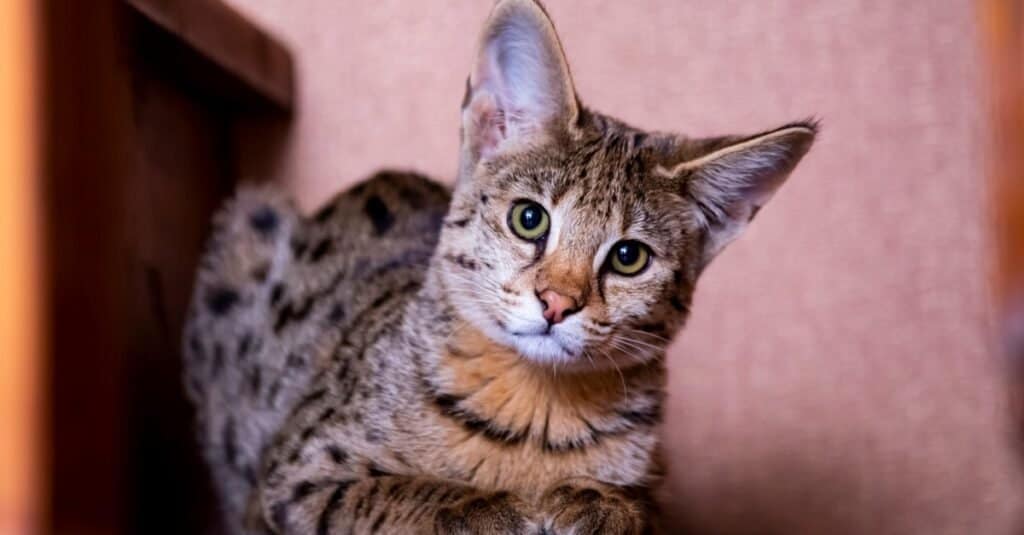
.
©Kolomenskaya Kseniya/Shutterstock.com
While the Savannah cat wasn’t actually first bred in Egypt, it has a strong resemblance to some ancient Egyptian cat breeds. Created from breeding together a wild African cat known as the serval with a Siamese. Despite being completely wild cats, they were kept as a sign of prestige among the religious and aristocratic elite. Though they can’t bulk up to 25 pounds like a serval can, Savannah cats are large and muscular cats that can easily reach 15 pounds and stand roughly a foot tall. But what stands out the most are the unique spots that make the Savannah cat look like a tiny leopard in muted colors.
Savannah cats have inherited a lot of the personality traits of the Siamese. And while Siamese are often commented as having personalities like dogs, the Savannah cat applies that sense of personality to a cat that’s practically the size of a dog. Due to their close connection to their wild side, these cats have a strong prey instinct, though that can be trained without too much effort. These cats require a decent amount of attention and space to play and stretch their long bodies. They also need proper socialization, as they’re known for being a bit standoffish with strangers.
#6. Abyssinian: An Ancient Breed
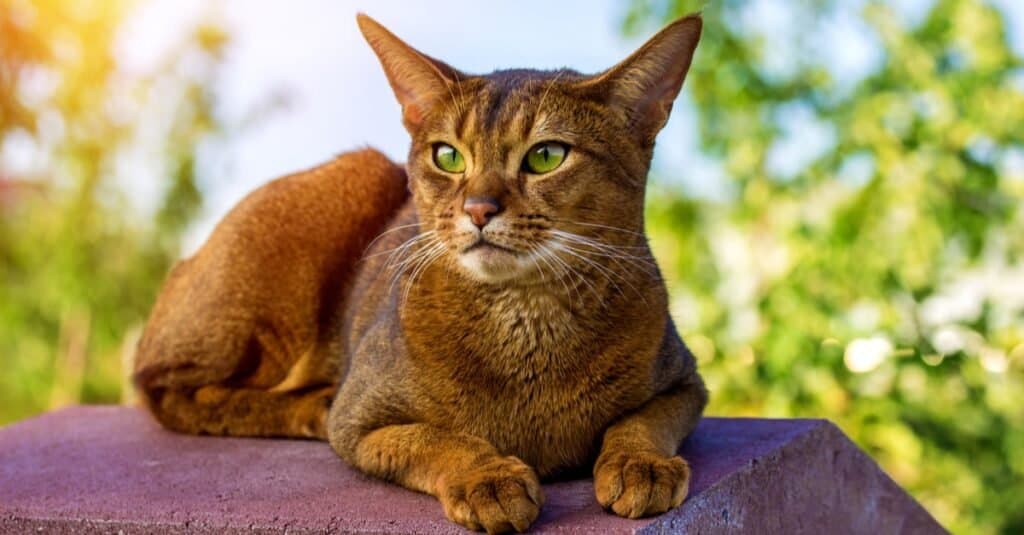
©Kyselova Inna/Shutterstock.com
Abyssinians — like most of the Egyptian cat breeds on this list — have the appearance of wild cats, although they’ve been fully domesticated for as long as 4,000 years. Whether these cats really came from Egypt is in contention, as its name suggests origins in Ethiopia, and recent genetic tests make a convincing argument for India or Southeast Asia as the point of origin for the breed. But their striking resemblance to Egyptian cats as they appear in both contemporary art and mummies from ancient and classical Egypt.
They may be old, but these cats never got over their kittenish curiosity. Instead, they sharpen it with their great intelligence. These cats want to follow their caretakers as they check off every item on their daily chore list and try to understand why. No other breed on the planet has managed to quite replicate the unique and beautiful coat of the Abyssinian, which is distinguished by overlapping ticked patterns of varying colors. The cost of an Abyssinian can range from a price of roughly $500 to a price of $1,500 for a cat that can compete at show.
If you’re interested in learning more about the Abyssinian, head on over here.
#7. Egyptian Mau: A Contentious Choice
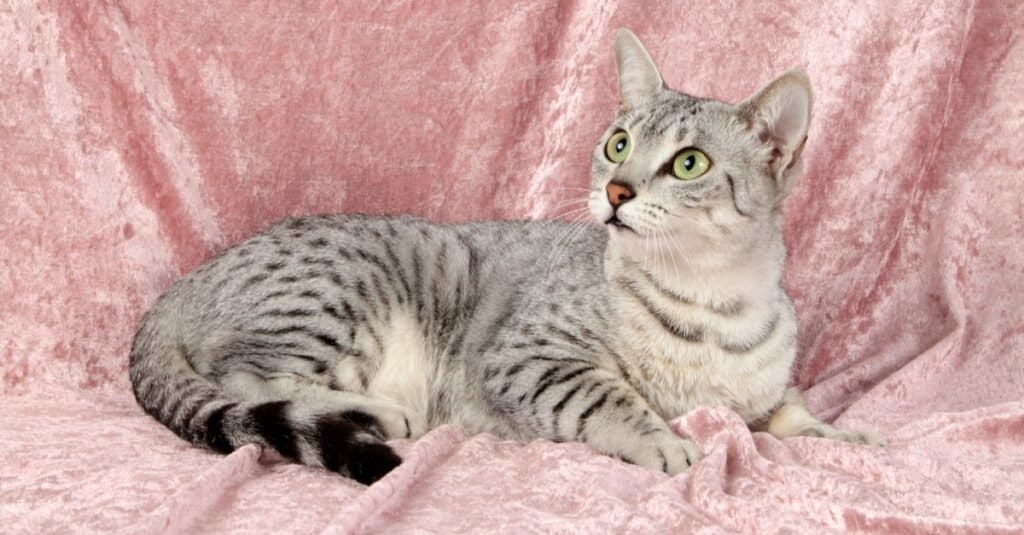
©Jolanta Beinarovica/Shutterstock.com
The Egyptian mau is the only domesticated cat to naturally possess spots, but it might not actually be from Egypt. Recent DNA evidence has suggested this breed might have its origins in Europe instead, but there’s no doubt that this distinctively athletic and tall cat closely resembles those appearing in relics from Egypt’s past. Their personalities have a lot in common with other Egyptian breeds of cat on this list as well. Smart, playful, and athletic, these cats can be demanding but offer a lot in return.
Notably, Egyptian maus are known for building a special relationship with one person. That’s not to say that they can’t interact with other people in the household. Maus are initially wary of strangers, though their hesitation will quickly fade if they’ve been properly socialized. Egyptian mau kittens come with a steeper price tag than the Abyssinian: anywhere between $1,000 and $2,500.
The Egyptian mau’s lineage may be in question, but you can learn everything else we know about this regal breed here.
Summary
Egypt is recognized as the birth[lace of the domestic cat. All of the cats running around today, can probably trace some of their lineage back to an Egyptian cat. In ancient Egypt, cats were worshipped, kept as pets, and played an important role In Egypt becoming the agricultural powerhouse that it was. The fascination and reverence that the Ancient Egyptians held for cats can be seen in the statues, paintings, and mummies that are still found today. These are the 7 Egyptian breeds we still have today:
| Breed | |
|---|---|
| 1. | African Wildcat |
| 2. | Chausie |
| 3. | Shirazi |
| 4. | Nile Valley Egyptian Cat |
| 5. | Savanah Cat |
| 6. | Abyssinian |
| 7. | Egyptian Mau |
Up Next…
- 10 Incredible Egyptian Mau Facts Click here to learn more about this spotted cat that has cat fanciers up in arms.
- Maine Coon vs. Norwegian Forest Cat: Comparing these Giant Cat Breeds While Egypt may be recognized as the birthplace of the domestic cat, they certainly aren’t the only place cats were found at the time.
- Cat Breeds Check out some of these other breeds of cats. Can you tell which ones originated in Egypt?
The photo featured at the top of this post is © Bildagentur Zoonar GmbH/Shutterstock.com
Thank you for reading! Have some feedback for us? Contact the AZ Animals editorial team.






